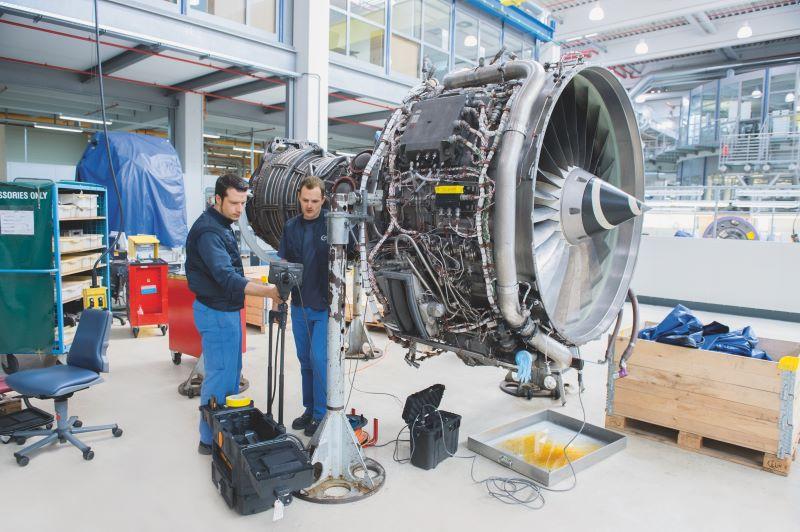
The push to increase production of Pratt & Whitney PW1000G geared turbofan (GTF) parts to replace ones with manufacturing defects is affecting maintenance strategies for legacy engines, notably the V2500, MTU executives said.
“The manufacturing of [PW1000G] parts is a little bit of a bottleneck,” MTU CFO Peter Kameritsch said on a recent earnings call. “So, some V2500 parts are not [being] produced.”
Parts flagged for accelerated replacement include high pressure turbine disks and other life-limited parts (LLPs) containing potentially contaminated powder metal (PM) from an RTX-owned supplier. Engines in both the PW1000G and IAE V2500 fleets have them. Affected parts must be inspected and ideally replaced based on updated Pratt guidance mandated by regulators. Pratt, also part of RTX, is the majority shareholder in the IAE consortium.
The issue’s scope, covering parts made from November 2015 through September 2021, means the newer, PW1000G-powered fleet is hit harder. Some 600 GTF-powered aircraft are on the ground awaiting engines undergoing off-wing inspections—a figure that appears to have plateaued.
Pratt is working to replace as many suspect GTF parts as possible during the checks to avoid operators having to pull engines for follow-up inspections before the next scheduled overhauls. But the manufacturer will not be producing enough full-life parts to supply both new-production engines and those coming in for checks until late this year at the earliest.
Among the PW1000G parts production ramp’s ramifications is less capacity to make similar parts for other engines, including the V2500. While the V2500 fleet is not seeing widespread groundings as a result of either its PM problems or the short-term materials shortage, operators are adjusting overhaul work packages to account for not having some new parts.
“They focus more on lighter work scopes,” Kameritsch said. “So, we sell less spare parts because the part availability is not there.”
GTF inspection demand has affected shops, including some that handle the V2500 as well, overflowing. MTU, a risk-sharing partner with Pratt in both the GTF and V2500 programs, says the surge combined with parts-availability issues is driving turnaround times up. As a result, many operators already pressed to find enough fleet capacity to meet strong passenger demand are re-evaluating their maintenance strategies.
“A wide shortage of spare parts leads to significantly lower turnaround times as final assembly has to wait until all parts are available,” MTU CEO Lars Wagner said. “This slows the speed of inducting further engines into the shop and results in lead times for inductions. The implication is a reduced throughput, which reduces engine availability in the market. This causes airlines to focus on lighter work scope and deferral of LLPs and heavy maintenance wherever possible.”
Both Pratt and MTU are confident that the PM-related parts shortages will be short-lived. RTX has pointed to the production ramp-up as a key to getting engines moving more quickly through shops and reducing ground time for affected aircraft. Current wing-to-wing turnaround times are estimated to be around 300 days, roughly split between time awaiting a shop slot and time undergoing work.
RTX executives said on a recent earnings call that V2500 shop visits were down in the first quarter, but are still expected to total 800 in 2024. The expected uptick will boost MTU and others that supply parts and services for the key Airbus A320ceo-family engine.
“There is a pent-up demand” for some affected non-PW1000G parts, Kameritsch said. “We will see recovery in the second half of the year once powder production starts ramping up.”





